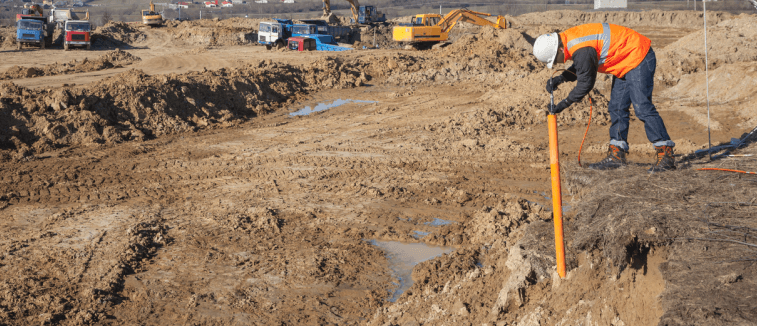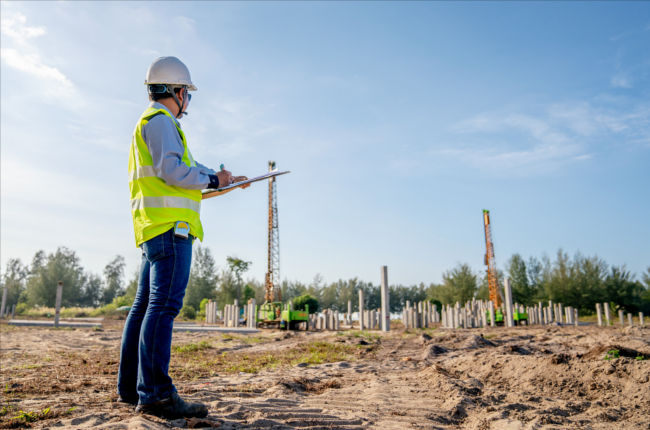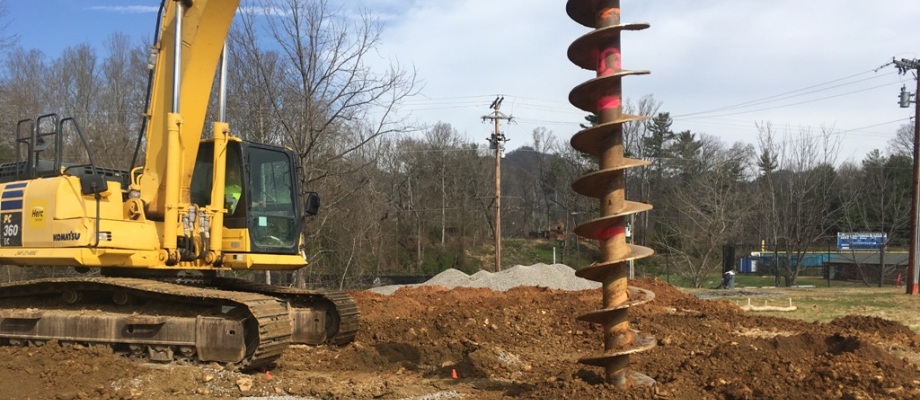Discovering the Cutting-edge Techniques and Technologies Forming the Future of the Geotechnical Sector for Sustainable Engineering Solutions
The geotechnical market is undertaking a transformative shift, driven by ingenious techniques and modern technologies that stress sustainable design options. Advanced dirt stabilization techniques, the usage of clever materials, and the application of data analytics are redefining just how we approach framework challenges.
Advanced Soil Stabilization Strategies
Soil stablizing is an essential procedure in geotechnical engineering, targeted at enhancing the physical homes of soil to enhance its load-bearing ability and toughness. Advanced soil stabilization techniques play a critical role in resolving difficulties connected with weak or unstable dirts, thereby enabling secure and reliable building methods.
Amongst the famous methods, chemical stablizing includes the usage of additives such as lime, cement, or fly ash, which react with soil bits to develop an extra natural mass. This technique is particularly reliable in improving the toughness and dampness resistance of large clay dirts. Mechanical stablizing, on the various other hand, includes the physical modification of soil buildings with compaction or the consolidation of granular materials, causing improved thickness and security.
An additional cutting-edge strategy is the use of geosynthetics, which provide support and decrease soil erosion while enhancing water drainage. Techniques like dirt blending and deep soil stabilization are also getting traction, enabling for in-situ therapy of bothersome soils. Collectively, these sophisticated methods not only improve the efficiency of soil structures yet additionally add to sustainable design methods by lessening the requirement for considerable excavation and product transport.
Smart Materials in Geotechnics
Development goes to the leading edge of geotechnical design, specifically with the consolidation of wise materials that improve the performance and performance of soil structures. Smart materials, such as form memory alloys, piezoelectric products, and self-healing polymers, are reinventing the method engineers approach dirt stabilization and facilities durability (geotechnical engineers). These materials can adjust to changing ecological conditions, react to stress and anxiety, and also fix themselves, substantially improving the resilience of geotechnical systems
For instance, piezoelectric products can generate electric fees in feedback to mechanical stress, offering potential for real-time surveillance of soil conditions and architectural stability. Self-healing materials can autonomously fix damages and cracks, reducing upkeep prices and prolonging the life-span of geotechnical possessions. The integration of these smart materials not only improves the mechanical properties of soil yet likewise contributes to lasting design methods by decreasing source usage and ecological effect.
As the geotechnical industry proceeds to progress, the adoption of wise materials will play an essential duty in developing innovative remedies, making sure that frameworks are not just robust yet likewise versatile to future difficulties. This transformative approach is positioned to redefine the requirements of safety and security and efficiency in geotechnical design.
Information Analytics for Infrastructure
The assimilation of wise materials in geotechnical engineering has paved the method for advanced approaches, specifically in the realm of data analytics for facilities. This cutting-edge approach leverages considerable data collection and analytical strategies to enhance decision-making procedures throughout the infrastructure lifecycle. By utilizing sensing units installed in wise materials, engineers can continuously check crucial criteria such as dirt stability, wetness degrees, and architectural honesty.
Information analytics allows the transformation of raw information into workable understandings, enabling predictive maintenance and improved threat monitoring. Advanced algorithms and device learning techniques promote the recognition of abnormalities and patterns, which can notify prompt interventions and maximize resource allowance. In addition, incorporating geographical information systems (GIS) discover this info here improves spatial analysis, further enhancing the decision-making framework.
As facilities projects grow in intricacy, the dependence on data analytics comes to be significantly crucial. It promotes a proactive method, minimizing the chance of failures and guaranteeing the long life and sustainability of frameworks. By harnessing the power of data analytics, the geotechnical industry is positioned to not just boost existing methods but additionally pioneer ingenious services for future infrastructure challenges. This synergy of modern technology and design principles will certainly specify the future of lasting framework advancement.

Sustainable Ground Enhancement Methods
Different lasting ground enhancement approaches are becoming vital remedies to resolve the difficulties of geotechnical design while lessening environmental influence. These techniques not just enhance dirt efficiency but likewise advertise eco-friendly stewardship by decreasing reliance on traditional, much more intrusive methods.

One more cutting-edge technique is the application of geosynthetics, which consists of biodegradable materials that strengthen dirt while advertising drain and disintegration control - geotechnical engineers. This minimizes the requirement for heavy machinery and minimizes site disturbance, therefore protecting regional ecological communities
In addition, techniques such as dynamic compaction and vibro-replacement have progressed to consist of sustainable methods, including recycled materials and reducing carbon footprints. These methods exemplify the market's shift towards more ecologically responsible services, guaranteeing that ground improvement not just fulfills design requirements yet also contributes positively to the surrounding setting.
Innovations in Environmental Surveillance
In current years, improvements in ecological monitoring have actually dramatically boosted the capacity to evaluate and manage geotechnical projects with very little eco-friendly disturbance. Cutting-edge modern technologies, such as remote picking up, Net of Things (IoT) tools, and real-time data analytics, are transforming how environmental impacts are gauged and alleviated.
Remote noticing innovations, including satellite imagery and air-borne LiDAR, assist in the fast evaluation of land use adjustments and my sources ecological conditions - tailings engineer. These tools permit for continual tracking of sites, enabling designers to determine potential concerns prior to they escalate. In addition, IoT tools, geared up with sensors for criteria like dirt temperature level, moisture, and gas emissions, give real-time information streams that improve the understanding of site-specific ecological variables
Real-time data analytics better improve decision-making processes by incorporating information from different resources, permitting proactive monitoring approaches. This alternative approach not just guarantees conformity with environmental regulations but likewise advertises sustainable practices within the geotechnical market.
As these innovations remain to develop, they hold the possible to bridge the gap in between design purposes and environmental stewardship, promoting a more sustainable future for geotechnical tasks worldwide.
Final Thought
Advanced soil stabilization techniques, the combination of clever products, and the application of information analytics collectively improve the durability and effectiveness of facilities. These advancements not only address contemporary engineering difficulties however also lead the way for a much more sustainable future in geotechnical methods.
Methods like dirt blending and deep soil stabilization are click site additionally gaining traction, permitting for in-situ therapy of problematic soils. Jointly, these sophisticated methods not just improve the performance of dirt frameworks but additionally add to sustainable design practices by reducing the need for substantial excavation and material transport.
